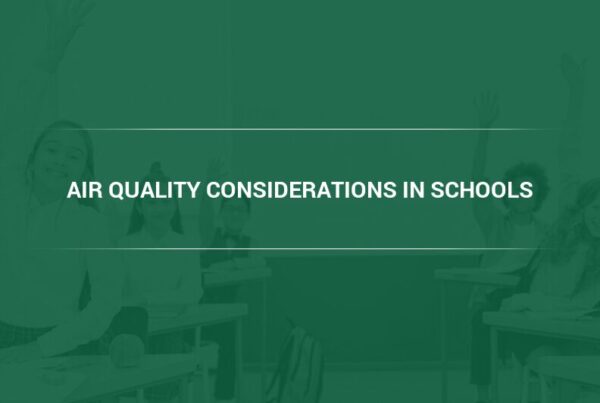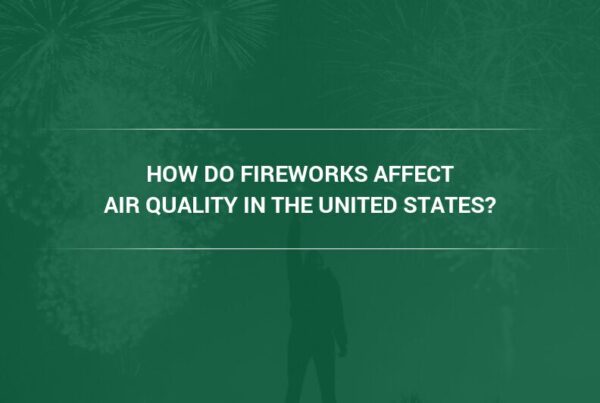Allergies are an increasingly common condition in the United States. The 2023 Allergy Capitals Report provides an important insight into the cities currently suffering from the worst allergy season. This report identifies the top 100 cities in America where allergies are most problematic, taking factors such as airborne pollen counts, median mold spores, and ragweed allergen index into account. Knowing which cities suffer from higher-than-normal allergen levels can help those with allergies prepare for the upcoming seasons and make informed decisions about their travels and daily activities.
In this article, Camfil air quality experts explain the findings of the 2023 Allergies Capital Report and discuss strategies for mitigating the effects of pollen allergies.
What is the Allergy Capitals Report?
Each year, the Allergies and Asthma Foundation of America (AAFA) releases a report highlighting the 100 worst cities for seasonal allergy sufferers based on three main quantifiable factors:
- Pollen count scores from trees, grasses, weeds, and other pollen-producing plants
- Usage of over-the-counter allergy medication usage
- Availability of allergy specialists per capita
This year’s report emphasizes the importance of monitoring local pollen levels with pollen sensors, the impact of climate change on seasonal allergies, and self-care strategies for seasonal allergy sufferers.
Seasonal Allergies FAQs
What Are Seasonal Allergies?
Seasonal allergic rhinitis, more commonly referred to as seasonal allergies and sometimes as “hay fever,” is a condition caused by the presence of certain types of pollen, which act as a respiratory irritant for some people. Seasonal allergies usually occur in the spring and summer when most plants release pollen, but some places experience seasonal allergies year-round now due to the range of native and invasive plant species with different pollen seasons. Additionally, rising temperatures due to climate change have caused pollen seasons to start earlier and last longer in recent years.
What Are the Symptoms of Seasonal Allergies?
Seasonal allergies can range in magnitude from mild irritation to severe discomfort and interruption of daily activities, with symptoms frequently including:
- Sneezing
- Stuffy nose
- Runny nose
- Red, itchy, or watery eyes
- Itchy ears, nose, and mouth
- Throat pain and irritation
- Fatigue or excessive tiredness
Common Seasonal Pollutants
Seasonal pollutants vary regionally and by the time of year, and not every allergy sufferer is affected by every kind of pollen. Some of the most common allergy-causing plants in the United States include:
- Grass
- Burning bush
- Cocklebur
- Lamb’s-quarters
- Pigweed
- Sagebrush and mugwort
- Tumbleweed and Russian thistle
How Many People Are Affected by Seasonal Allergies?
According to AAFA data, 81 million Americans were diagnosed with seasonal allergic rhinitis in 2021, accounting for 26% of American adults and 19% of American children. These numbers represent just the number of people who sought medical intervention for their allergy symptoms, so it is likely that the true percentage of affected individuals is significantly higher. Overall, an allergy to one or more kinds of pollen is the most commonly diagnosed allergy in the United States,
What Factors Make Seasonal Allergies Worse?
The presence of mold, air pollution, smoke, and dust in the air can worsen allergy symptoms as these pollutants also cause respiratory irritation. Exposure to allergens is also increased with activities like mowing the lawn, gardening, or participating in outdoor sports, which can lead to an increase in symptoms.
Additionally, warmer winter temperatures can cause spring plants to pollinate earlier, while a rainier spring season can lead to more rapid plant growth and introduce the presence of mold into the environment. All of these factors can cause allergy season to last longer and trigger more severe symptoms in more people.
Top 10 Worst Cities for Seasonal Allergies in 2023
The 2023 Allergy Capital Report named the following cities as the ten worst cities for seasonal allergy sufferers.
- Wichita, KS
- Dallas, TX
- Scranton, PA
- Oklahoma City, OK
- Tulsa, OK
- Sarasota, FL
- Cape Coral, FL
- Orlando, FL
- Des Moines, IA
- Greenville, SC
Of these ten cities, Wichita, Scranton, and Oklahoma City were also among the ten worst cities for seasonal allergy sufferers in 2022.
How to Take Care of Yourself During Allergy Season
AAFA and the American College of Allergy, Asthma, and Immunology (ACAAI) recommend the following strategies for taking care of yourself during allergy season:
- Consult with an allergist about what medication and immunotherapy may be appropriate for you.
- Keep track of pollen and mold spore counts.
- Have over-the-counter allergy medications such as diphenhydramine (Benadryl) and loratadine (Claritin) on hand. If you have to mow the lawn, weed your garden, or take care of other outdoor activities, take medication beforehand and consider wearing an N-95 mask to limit exposure.
- Rinse out your nose.
- Take a shower, wash your hair, and change your clothes after long periods of time spent outdoors, particularly if you have been sitting on the grass or in an area with a lot of trees and plants.
- Know which kinds of pollen you are sensitive to and limit time outdoors when these plants are pollinating.
- Limit exposure to pollen, which can be done with an indoor air purifier.
How to Prevent Seasonal Allergies with Air Purifiers
The average American spends 90% of their time indoors, and for seasonal allergy sufferers, it can be tempting to spend even more time inside in an attempt to avoid pollen exposure. However, poorly ventilated indoor spaces or buildings that circulate air in from outside without proper filtration can have even higher concentrations of pollen than the outdoors, where the wind is able to disperse pollen at the very least.
Furthermore, indoor air can be as much as fifty times more polluted than outdoor air, and the additional respiratory irritation caused by other pollutants, such as dust and volatile organic compounds, can exacerbate the symptoms of pollen allergies.
Using a premium air purifier that uses tested and certified HEPA filters, such as Camfil’s City M, can address indoor pollen concentrations. The City M also uses an activated carbon filter, which has the ability to capture and reduce irritating fumes, household odors, and VOCs that exacerbate respiratory irritation.
By using an effective air purifier like the City M in conjunction with other strategies such as medication and immunotherapy, you can stay ahead of your allergies this season and enjoy a more comfortable spring.
Listen to Colleen, a Camfil customer who uses the City M air purifier, discuss how the City M has provided relief from severe allergies and other respiratory problems.
About Camfil Clean Air Solutions
For more than half a century, Camfil has been helping people breathe cleaner air. As a leading manufacturer of premium clean air solutions, we provide commercial and industrial systems for air filtration and air pollution control that improve worker and equipment productivity, minimize energy use, and benefit human health and the environment. We firmly believe that the best solutions for our customers are the best solutions for our planet, too. That’s why every step of the way – from design to delivery and across the product life cycle – we consider the impact of what we do on people and on the world around us. Through a fresh approach to problem-solving, innovative design, precise process control, and a strong customer focus we aim to conserve more, use less and find better ways – so we can all breathe easier.
The Camfil Group is headquartered in Stockholm, Sweden, and has 31 manufacturing sites, six R&D centers, local sales offices in 35+ countries, and about 5,200 employees and growing. We proudly serve and support customers in a wide variety of industries and in communities across the world. To discover how Camfil USA can help you to protect people, processes and the environment, visit us at www.camfil.us/
##
Media Contact:
Lynne Laake
Camfil USA Air Filters
T: 888.599.6620
E: Lynne.Laake@camfil.com
F: Friend Camfil USA on Facebook
T: Follow Camfil USA on Twitter
Y: Watch Camfil Videos on YouTube
L: Follow our LinkedIn Page
Sources:
https://acaai.org/allergies/allergic-conditions/seasonal-allergies/
https://community.aafa.org/blog/2023-allergy-capitals-report-where-does-your-city-rank



